Explore Bhutan- ‘The Kingdom in the Sky’.
Written by Chloe Hambidge
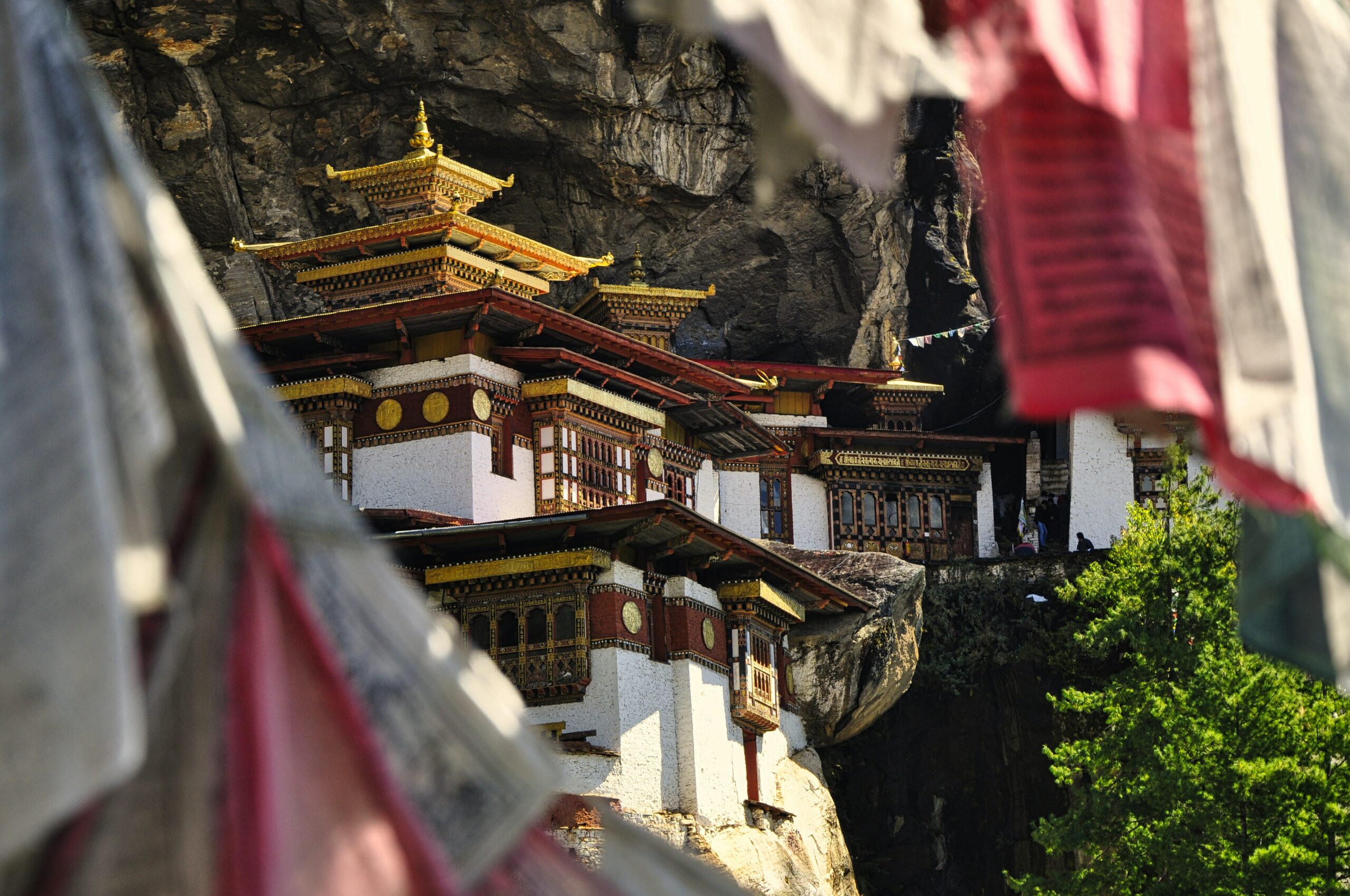
The magic of Bhutan.
This extraordinary destination amongst the clouds is a Himalayan kingdom cloaked in mystique and magic. This Buddhist haven embraces all things wellness and sustainable as it’s a country dedicated to happiness. Buddhist beliefs are surrounded by holistic celebration, enlightenment, unity and freedom, which is parallel to what Bhutan stands for. Revel in the kindness and friendly faces of locals as you wander various hikes, visit embellished temples and taste tantalizing spices in a country where peace and happiness of its inhabitants is more valuable than GDP; with the stats to prove it, Bhutan is the only country in the world to measure national happiness.
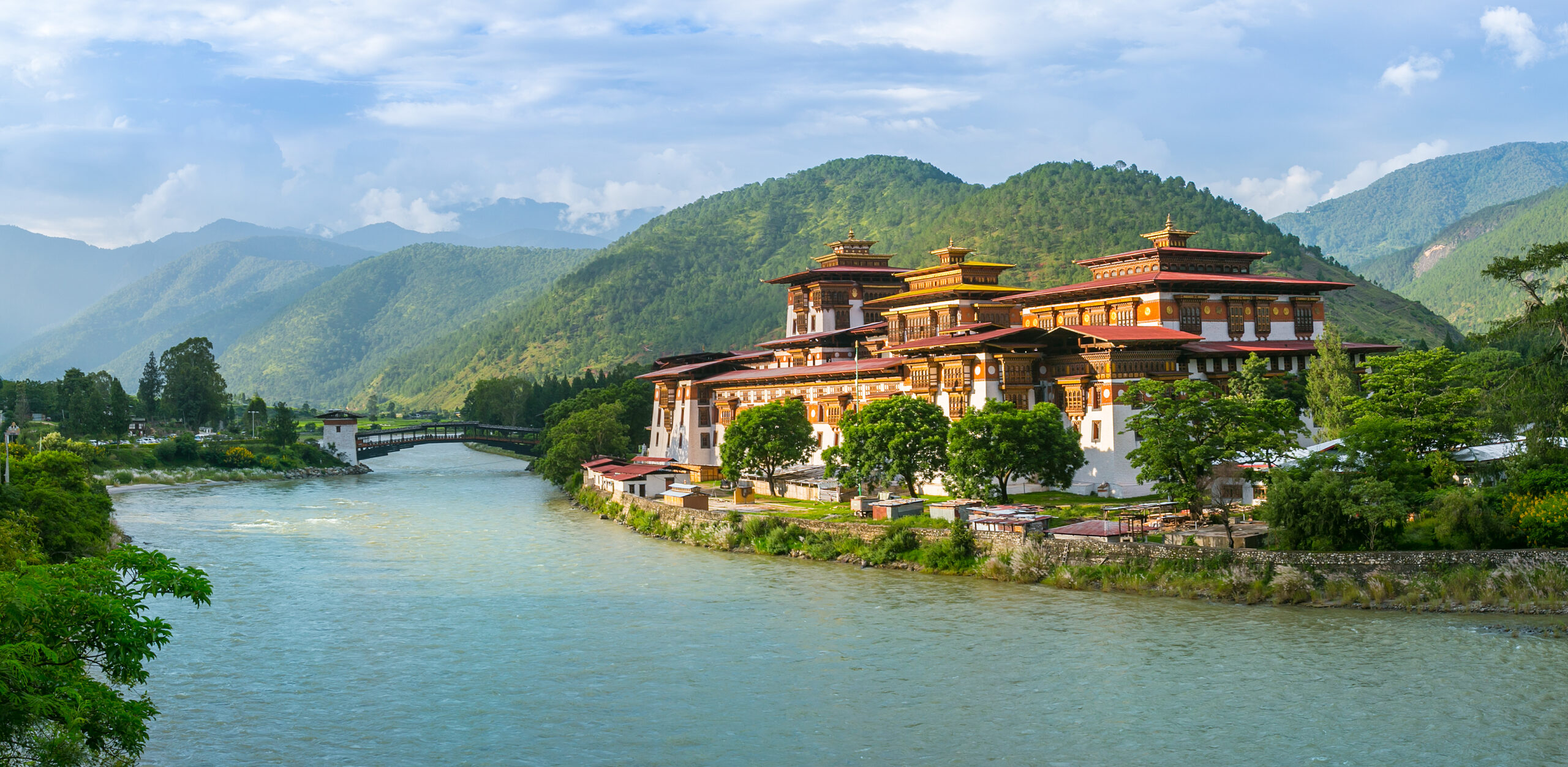
Dedicated to protecting its nature and culture, there’s something to awe at at every delirious turn of the head. Hopefully not from adjusting to the high altitude, this delirium will be as a result of the imposing Himalayas as they huddle around you, an adventure here will always be under the protection of these God-given peaks. Witnessing this beautiful architecture is experiencing Bhutan’s traditional touch with anything from traditional houses to ancient fortresses, everything holding an air of majestic grandeur. A country of vibrant colour, Bhutanese architecture has many distinct features unique to its creations whether that’s colours used for symbolic meaning representing the natural elements or dzongs perched on hilltops and monasteries on cliffs- all boasting the country’s natural bliss. As a way of preserving these cherished wonders, Bhutan has a tourism tax of around $200 per day, promoting value not volume, this is the reason this gold mine of culture and natural beauty has upkept its charm and allure.
The vibrancy of Bhutan’s culture.
The beating heart of Bhutanese culture is driven by colour, vibrant pinks to royal blues you will find them in the finest silk garments to prayer flags blowing in the wind. In proud posture and a sense of gratitude the Bhutanese wear their national dress on a daily basis- men to wear a gho and woman wearing a kira. These are also compulsory to wear to any formal events with these outfits themselves celebrating everything the country stands for, a unique feature highly recognized worldwide as glimmer of who they are.

Engulfed by these finely grafted garments and surrounded by prayer flags is when you will truly understand the country’s dedication to their religion and devout wellness. These small tokens of luck, known as prayer flags, are believed to bring extended happiness, a long life and good karma to any sentient being. These rectangles of faith will guide your travels as they’re found along mountain passes, bridges, temples, roofs of houses and more.
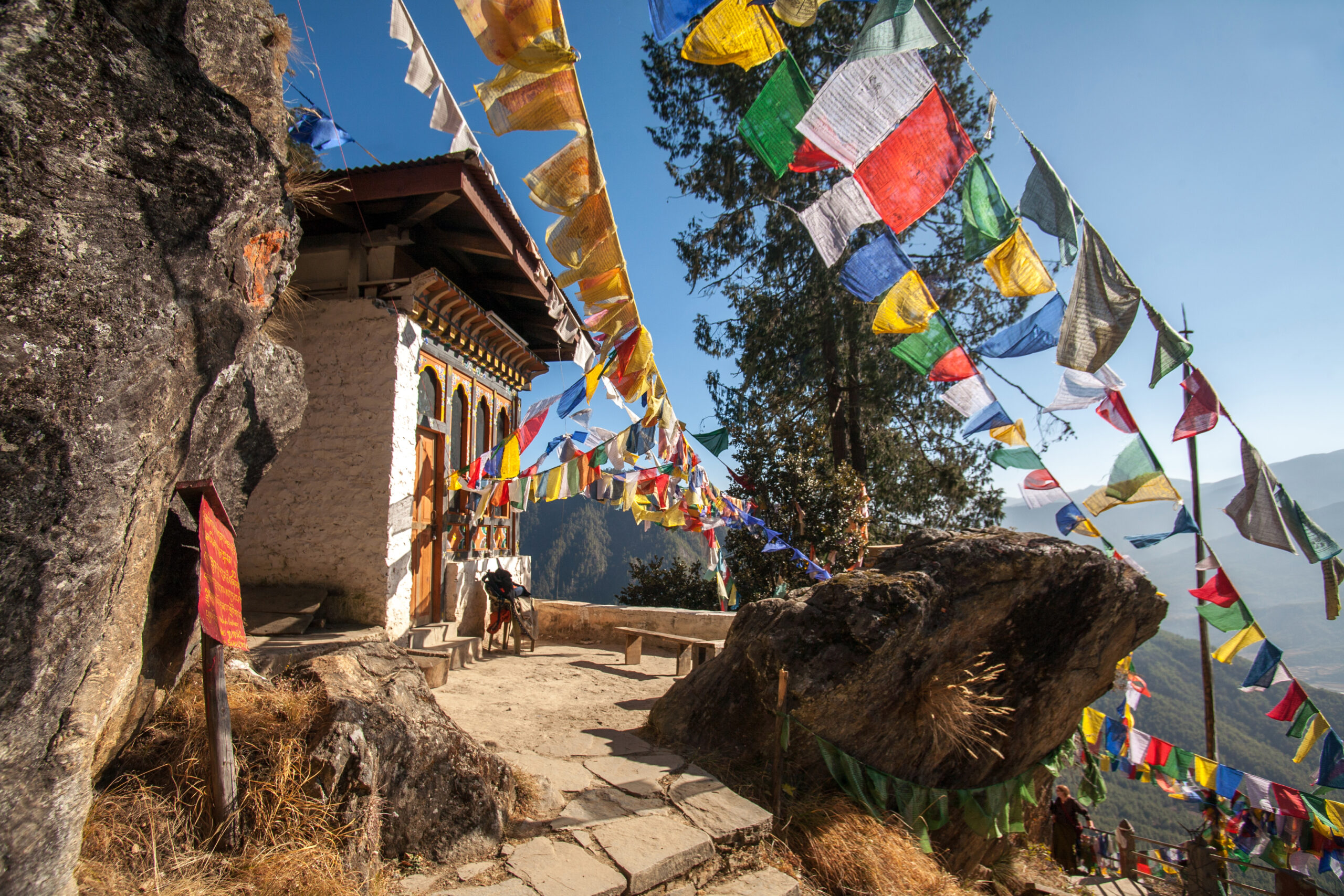
The Tiger’s Nest Monastery.
Nestled amongst the empowering force of Himalayas, the Trans Bhutan Trail is an ancient route pathed out by the ongoing steps of our ancestors. All the way up to the 1960s this route was used by pilgrims, messengers, armies and traders as it was the only way to travel and communicate cross country. Under the vision of the King of Bhutan, in late 2022 the historic route was regenerated (after a national highway was built in the 1960s, the trail fell to disuse) for tourism as well as to represent the nations unity.
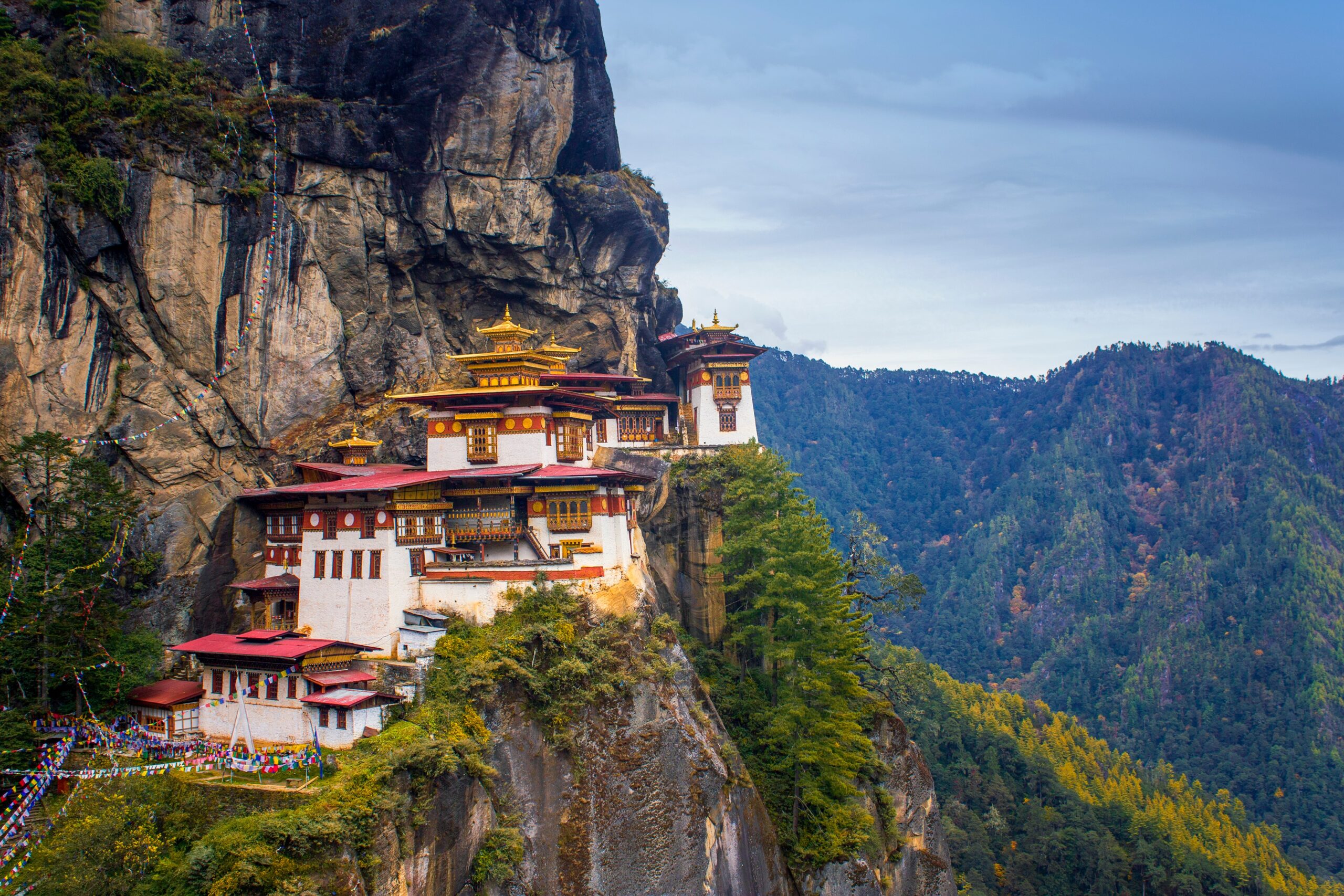
A walk along this trail is a journey of discovery amongst yourself and the honeypot that is traditional Bhutan. Stumble upon anything from the country’s unique culture and multiple dialects to exposing yourself to different religious sites and varied flora, fauna and birds. It’s a transformative experience that will be worth every penny. Indulge in local delicacies brimming with Balinese flavours throughout your trek, which is basically anything spicy with chilli peppers holding a key position in most meals. Branch out and taste the well loved national dish of ema datshi (chilli cheese stew) and one of the locals favourite drinks, butter tea. The scenic views are ongoing and friendly chats with the locals evoke unbeatable feelings of rejuvenation as gratitude as you explore this once foreign corner of the earth. To open your eyes behind the history of the incredible sights along the trail, each stage has QR signposts providing links to comic-book style illustrations. International hikers must be accompanied by a guide which is a blessing in itself as you get a greater understanding of your adventure, with different itineraries being available.
Taking pride position as one of the holiest sites in the world and the trails biggest claim to fame, Tigers Nest Monastery is said to be completely spell bounding. A trip here is an ascent into the clouds as the monastery is built on a cliff 3000m above sea level, so you can only imagine how memorable a day here would be. Emitting unprecedented levels of peace and tranquility, there are no phones allowed into the monastery- not that our words would’ve done it any justice. Hikers can reach the site via a trail with a natural clay surface, big enough to walk comfortably, you may also trek up by horse. Prior to getting going you are able to by walking sticks as the hikes base, there are also rest areas throughout your ascent and a cafeteria which opens up views of the monastery, a tease for what’s to come.
Through forests and hugging distant cliff faces, a walk to this holy ground isn’t just reserved for us tourists, you will be joining Bhutanese pilgrims and people from all walks of life so the stairs to the sacred space should be followed with an air of respect and gratitude. At the point where you reach the concrete stairs for one of the final few steps, you will need to hold on tight to the banister, one wrong step could be fatal. You are now so high you can look below and come face to face with an impressive waterfall, as you cross a bridge to the final run of your journey.
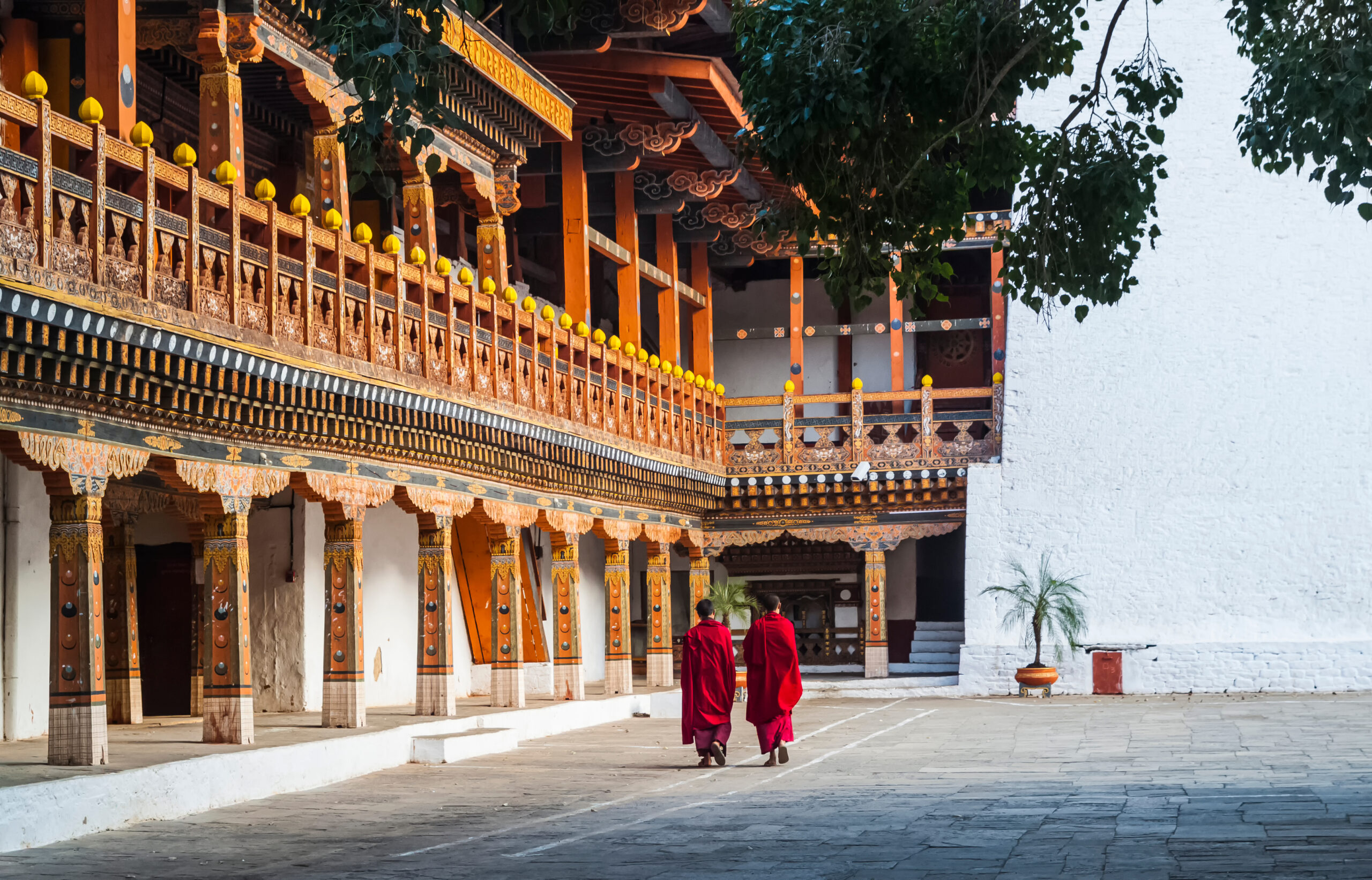
Some state an indescribable sense of captivation at the sight of the Tiger Nest, some explain a feeling of connection at this breathtaking spiritual area, either way it’s a destination that will leave it’s mark. After a long hike, discovering this site is a well deserved feat. Derived from a legend about Guru Rinpoche, also known as Padmasambhava or the second Buddha, the saint who discovered the place in the 8th century. It is said he meditated in a cave for 3 years, 3 months, three days and three hours, subduing local demons whilst spreading Buddhist teachings. The Tigers Nest wasn’t actually built until the late 17th century, it was constructed by the fourth ruler of Bhutan, Gyalse Tenzin Rabgye. It’s said Guru Rinpoche flew on the back of a tigress to where the cliff is today, this tigress turning out to be his spiritual consort and wife in different form. A true depiction of these events cannot be described in the scope of this article, you must discover its teachings with a trip here with the backtrack of peaceful birdsong.
Visiting the Tiger’s Nest Monastery and wandering its temple is said to bring blessings and spiritual merit.



